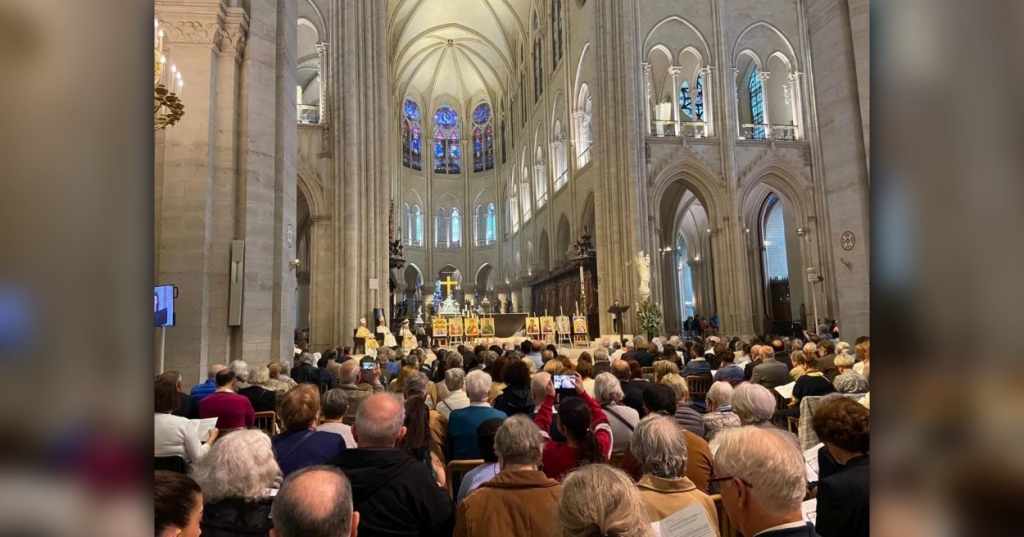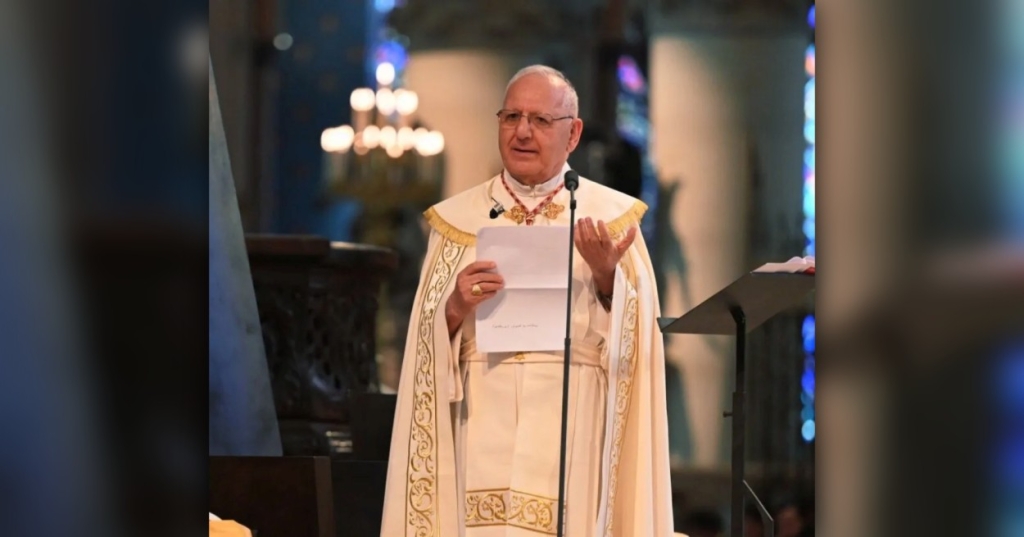Chaldean Patriarch Sako presides over Divine Liturgy at Notre-Dame Cathedral on World Day for Eastern Christians
PARIS — In a celebration of spiritual solidarity and cultural heritage, Chaldean Patriarch Cardinal Mar Louis Raphaël I Sako led a Divine Liturgy at Notre-Dame Cathedral on Sunday to commemorate the World Day for Eastern Christians.
This annual event, organized by the French association L’Œuvre d’Orient and held on the sixth Sunday of Easter, brought together bishops, clergy, believers, and artists. The ceremony highlighted the enduring legacy and spiritual richness of Eastern Christianity.
This year’s liturgy was particularly notable as it featured the blessing of eight newly commissioned icons created by a collaboration of French and Middle Eastern artists. The icons, depicting prominent saints of the early Eastern Church, were consecrated with sacred chrism and installed in a newly designated chapel within Notre-Dame, dedicated to St. George and the Eastern Christian community.
Archbishop Laurent Ulrich of Paris opened the ceremony with a reflection on the importance of iconography in Eastern Christian spirituality. “Icons are not merely images,” he said. “They are windows into the divine — tangible expressions of the Church’s faith and a profound invitation to prayer.”
Patriarch Sako praised the ongoing restoration of Notre-Dame and expressed gratitude for the recognition of Eastern Christian traditions within one of Western Christianity’s most iconic landmarks. “The dedication of this chapel is a significant gesture,” he stated. “It affirms the universality of the Church and the shared spiritual heritage that binds us.”
Syrian iconographer Neemat Badawi, who led the team of artists, explained the creative process behind the icons. “We didn’t replicate older works,” he said. “Each piece reinterprets the saints through a contemporary lens while honoring their origins and traditions.”
The saints depicted — Andrew, James, Mark, Gregory the Illuminator, Thomas, Addai and Mari, Frumentius, and Ignatius of Antioch — represent the geographic and theological diversity of Christianity during its formative centuries across the Middle East and beyond.
As the incense-filled air mingled with the sound of ancient Chaldean hymns reverberating through Notre-Dame’s soaring Gothic arches, the liturgy was a powerful affirmation of the enduring contributions of Eastern Christian communities, many of whom face marginalization or threats in their ancestral homelands.
The ceremony was a vivid reminder of the spiritual and cultural wealth that Eastern Christianity brings to the global Church. In a divided world, it served as a beacon of unity, both liturgical and human, and a call to preserve the richness of the Christian East for generations to come.





















